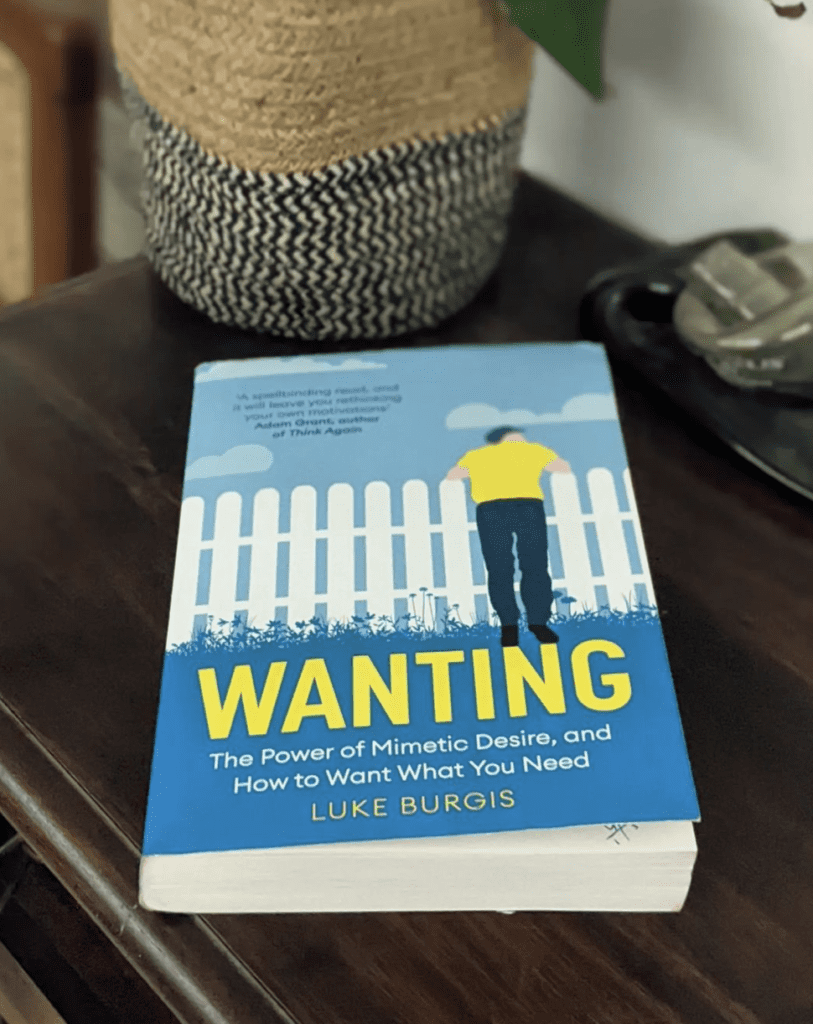Luke Burgis
Schopenhauer is believed to have said “A man can do as he wills, but not will as he wills.” We can replace will with ‘want’ and it still holds. But we have convinced ourselves otherwise – that we desire things independently. Based on the work and philosophy of René Girard, and his own experiences, Luke Burgis sets about dismantling this notion – what the book calls the Romantic Lie – self delusion.
If, in the free will debate, genetic and environmental determinism hasn’t made an impression on you, Girard postulates that most of what we desire is mimetic (imitative) and not intrinsic. We want what other people want. These desires are different from needs. Think of the latter as the two bottom rows of Maslow’s hierarchy and the former as the top three. And our choice of these desires are courtesy models – people or things that show us what is worth wanting. Look hard enough, and in all of your consumption and behaviour – from the choice of travel destinations to life partners, you will discover them.
Mimetic desire can lead us to destructive or productive cycles, and the book explores both paths. In the first part, we learn how mimetic desire starts in infancy to its evolution in adults, how it changes according to the person’s relationship with the model, how it works in groups (and causes societal conflicts) and how society has found ways (scapegoat mechanism) to diffuse it. This section has an excellent example of ‘models’ in action – Edward Bernays popularising smoking amongst women at a time when it was quite taboo. Another good example is that of a Romantic Lie – the efficient markets hypothesis – and what has been its anti-thesis consistently – Tesla. Musk clearly understands the power of mimetic desire really well. Dogecoin, anyone?
Desire, according to René Girard, is always for something we think we lack — or else it wouldn’t be desire at all. And hence the model – the one who has what we lack. The person’s relationship with the model – either people belonging to the same time, place or social sphere (Freshmanistan, our immediate world) or outside it (Celebristan, outside our ‘world’) also has an impact on the kind of mimesis that happens. We don’t really compete with the latter, in fact we imitate them freely and openly, but with the former, we compete. [Sidebar – The use of ‘stan’ and the usage of phrases right below chapter titles indicated to me that the author probably has Taleb as one of his models]
In a simpler world, our Freshmanistan was limited to those we actually were in touch in reality. And then came Facebook, which gave us practically infinite models. Scrolling, judging, comparing, imitating, seeking validation and praise….and feeling angsty! Burgis gives the example of one friend introducing another to baking, and how the desire to become the better baker locks them in mimetic rivalry that doesn’t end well.
A related part is about how the value of experts has shifted from people with a deep understanding of the subject to those with mimetic value. Just as we used to make fun of the Kardashians as ‘being famous for being famous’, we have experts who are ‘experts at being experts’. Also interesting that apparently Steve Jobs had a model too – Robert Friedland, a fellow student in college. And the example of Zappos, which was once a model, but imploded.
Mimetic desire spreads through culture, and creates competition and conflicts in societies. Early societies used sacrifice and the scapegoat mechanism – pinning the blame of the conflict on a specific entity – to diffuse the situation. It continues to this day – fired CEOs and coaches, ‘cancel culture’ etc. All parties silently agree that now that the conflict has been resolved, things will get better. There is an interesting perspective that the story of Jesus survived because though the mob tried to make him a scapegoat, it caused an enormous division in society, and one section called out the scapegoat mechanism – the folly of the crowd is shown to the reader of the scriptures, and hence it was unique for its time.
In the second part of the book, the focus is on how to break out of this cycle using techniques like disruptive empathy and intentionally discerning between thin and thick desires. Empathy is defined as the ability to share another person’s perspective without imitating or identifying with them to the extent of losing one’s own individuality. Developing thick desires, which endure and provide meaning, are a good way to not get distracted by thin, mimetic desires. Another interesting concept is ‘calculating thought’ and ‘meditative thought’. The former is the default, and the latter is slow, patient, and in the current usage of the word – nonproductive. This part also has a section on how to apply this to leadership, and ends with a perspective on the future of desire.
Mimetic desire permeates everything from the educational system to social media to venture capital, hijacking the original purpose of these entities. At an individual level, it impacts our work, relationships, parenting, and distorts the way we live our life. This book gives us a good perspective on making a different kind of attempt. By asking ourselves, why do we want what we want, really?
P.S. I tried reading Girard’s original work and couldn’t make a lot of headway. This is more accessible, and at some point, I am going to give the original work another shot.


One thought on “Wanting: The Power of Mimetic Desire, and How to Want What You Need”